#classic schlock
Explore tagged Tumblr posts
Text

A horror film that will stiffen you with laughter
#Bela Lugosi meets a Brooklyn gorilla#bela lugosi#old hollywood#vintage horror#classic horror#classic schlock
75 notes
·
View notes
Text
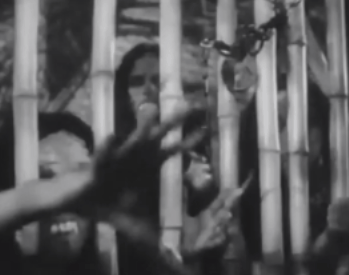
She Demons (1958)
#she demons#1958#1950s horror#1950s movies#richar e. cunha#schlock#b movies#trash classic#horrorgifs#gif#my gifs
194 notes
·
View notes
Text

John Bolton
#mars attacks#john bolton#vintage science fiction#vintage scifi#classic sci fi#classic science fiction#retro science fiction#retro sci fi#pulp scifi#pulp science fiction#schlock
22 notes
·
View notes
Text

#satan's school for girls#satan#girls#gif#animated gif#title screen#movie title#movie title screen#typography#a e s t h e t i c#aesthetic#digital art#goldberg#pink#retro#vintage#retro film#classic film#1970's#1970's film#1970's movies#schlock#horror#horror movies
19 notes
·
View notes
Text

The Tingler - in percepto! ⚡️🪑💀🎥🍿
#the tingler#13 ghosts#house on haunted hill#haunted house#macabre#vincent price#william castle#black and white#black and white film#film club#schlock#gimmicks#roger corman#movie poster#poster art#movie poster art#poster design#skeleton#classic cinema#cinema#vintage film#vintage horror#vintage hollywood#illusion#house of wax#brookline#Coolidge corner#art house#drive in movies#drive in theater
6 notes
·
View notes
Text
Actual writing advice: just write the story you want to.
Every 21st century piece of writing advice: Make us CARE about the character from page 1! Make us empathize with them! Make them interesting and different but still relatable and likable!
Every piece of classic literature: Hi. It's me. The bland everyman whose only purpose is to tell you this story. I have no actual personality. Here's the story of the time I encountered the worst people I ever met in my life. But first, ten pages of description about the place in which I met them.
#look#a lot of the classics that everyone said 'read!' falls in the same category as the 'modern hits'#I cannot effing stand them#dickens? austen? mfing shelly? no#I just can't get into the flow of them I'm sorry#modern books are for the most part the same schlock different print#and when I find books or even series I like I eat that up#I've derived more entertainment from writing fanfic than I have from trying to read published works anymore#because a lot of people keep falling into the hole of 'follow these writing tips!'#the only writing tips you need to follow is 'new paragraph when a new person speaks'#everything else can be broken#on that happy note#youtube stop recommending writing tips to me we're past that#and nine times out of ten I vehemently disagree with the 'tips' being offered
128K notes
·
View notes
Text
Visiepop stuff is like, perfectly adequate in every way aside from the absolute abhorrent taste behind every single decision. It’s terrible taste with great execution
#.txt#like I can appreciate the animation is good and fluid and technically proficient#but it’s like a classical musician playing nothing but top 40 schlock#it’s good but….. WHY
0 notes
Text
youtube
Out now!
1 note
·
View note
Photo
Freddy, that is your mother... Give her flowers this mother's day
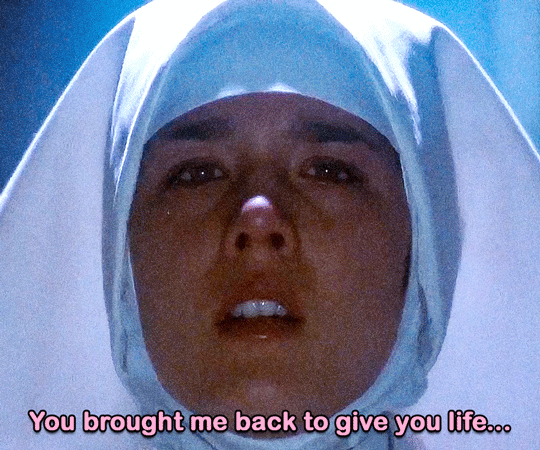
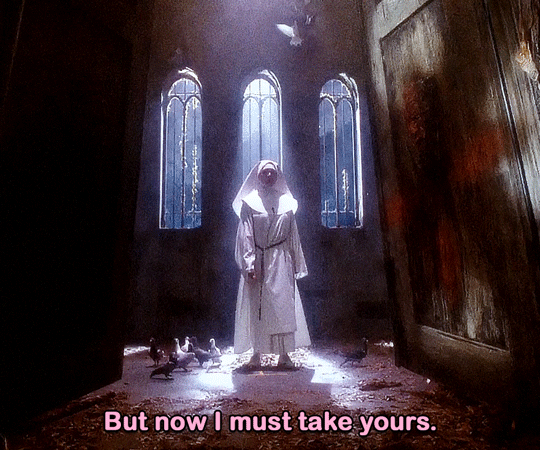
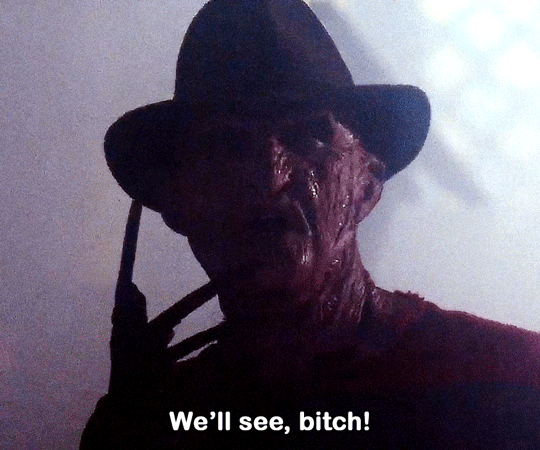
A NIGHTMARE ON ELM STREET: THE DREAM CHILD 1989 | dir. Stephen Hopkins
#1980s horror movies#classic horror#80s horror#shock and schlock#80’s horror#a nightmare on elm street#a nightmare on elm street: the dream child
2K notes
·
View notes
Note
i’ve seen chimera be tossed around for cats who are most definitely just torties before, and now with a design drop from a very (coughing) non-specific novel involving cats (coughing) … have you by chance posted actual examples of chimerism ? 🤭✨
Here’s my chimerism tag, currently there are 3 posts in there - 2 confirmed, 1 possible. I also recommend checking my mosaicism tag which features other interesting cases which people may assume to be chimeras.
I’m also going to give a shout out to Warriors fan designs that represent chimerism in a more realistic and infinitely more interesting manner than the Erins schlock.
Moonpaw still as a split-face tortoiseshell… but with a beautiful longhair/shorthair chimera twist.
Another split-face tortoiseshell Moonpaw whose a longhair/shorthair chimera, I’m liking that this interpretation is getting some love.
Moonpaw, Moonpaw and also Moonpaw. This artist made 3 interpretations, all of which are lovely. First is blue lynx point and black solid, second is flame lynx point and black solid and third is blue classic tabby and black solid.
Moonpaw by the same artist as above but a more finaziled interpretation featuring some flavor of cream alongside black self.
Another cream and black Moonpaw, big fan of this one.
And even more cream and black Moonpaw!
I also like this Moonpaw because you still have the standard tortoiseshell colors but the patterning is a little… off. It’s not just the split-face, the white spotting is only on the red portion and the large patches of color are unusual for a tortoiseshell with such little white.
Is it possible for such a design to just be an ordinary tortoiseshell? Perhaps, in theory! But there’s numerous little things which authentically give the impression that something else is going on here.
Archeye which appears to be a blue classic tabby + black self chimera, one of my favorite designs in general. The same artist has a design for Sol that’s a great chimera interpretation, lonnghair red and shorthair black.
Flametail as a unique mixture of cream and red and a Jayfeather who’s a blue and blue tabby chimera.
Fang as a blue/white and black chimera with the added flourish of also being longhair/shorthair and a dizzyingly pretty Robinwing sporting a mixture of seal point and blue tortoiseshell.
Fun side note: I had a chimera warriors oc that was black self but longhair/shorthair.
207 notes
·
View notes
Text

174 notes
·
View notes
Text
I was recently thinking of that whole cultural moment back in the 2010s when it became a cliche among pop literary analysists to say "Superheroes are just like those classical stories of gods and demigods. They're our modern mythology". And then they'd justify it by saying shit like "oh they're stories about strong guys with magic powers doing stuff. and they sometimes have a moral or a message or something". Like come on. It was all this stupid nonsense that was clearly only written so insecure nerds could justify their obsession with an (at the time) overwhelmingly popular sort of mass media schlock. I wish people could just like something that's bad instead of producing shitty thinkpieces on why they need to be taken seriously for it. Like at least make it a good thinkpiece
102 notes
·
View notes
Text
okay goosebumps post for @socksemoji :) when i was looking up the summaries of them online i wasn't sure how many i actually read but i'm scrolling through the classic series right now and so far there's not a single one that i don't recognize. some favorites are:
'one day at horror land' was the only one i really distinctly remembered the name of/knew i liked before i looked up the list so i think this one takes the grand prize
i completely forgot about slappy (i'm certain his name was slappy right) but when i saw the night of the living dummy one i was like OH YEAH. so i think that was also a favorite. not deviating from what was probably a popular pick here. i specifically remember a scene where the kid was in bed and slappy was in their room at night and i think the kid was a girl so i might have liked book two the most, based on the cover having a pink bed on it?
i don't remember much about the haunted mask but based on my !! reaction to seeing it on the list i think i liked that one also
a night in terror tower is also very familiar now that i see the title. i feel like i was a fan of children going to and being trapped in locations that are fucked up and want them to die
the horror at camp jellyjam. yeah okay i was a locations fan
the blob that ate everyone <3
also i love these covers so much

what is 'rise and shine. forever.' supposed to mean. some of these are more coherently menacing and then there's some where it's just completely endearing schlock Phrased in the cadence of a horror slogan. maybe i should reread some for fun...oh to oncemore be a kid capable of reading and really appreciating one million goosebumps novels
32 notes
·
View notes
Text
this halloween season im going on a journey of trying to understand art the clown. (talking At Length about the movies terrifier and, to a lesser degree, all hallows eve under the cut. so obligatory Spoilers warning goes here.)
when i first saw terrifier pop up as a title on netflix, i pretty much immediately wrote it off as a generic slasher/scary clown schlock movie, and for a while it seemed like that was the general consensus. i dont think i saw any real buzz about the terrifier movies until the second one came out, and after that it seemed like i blinked and the third one was already in theaters along with tons of art the clown merch and costumes on shelves. i did a little research about the general content of the movies and audience reactions, trying my best not to spoil myself in the process, and decided it was either the sheer grotesque spectacle winning people over in a "how much can you take before you puke" kinda way or there was really something to this series that i just wasnt seeing, and either one seemed like enough to make it worth the watch.
i figured if i was gonna do this i needed to go all in, so i started with all hallows eve, the movie art the clown actually first features in before going on to get his own franchise. theres not terribly much to say about this not-prequel. the art of all hallows eve shares some broad similarities with the final version and establishes a few reoccurring motifs: the use of a tv as a framing device, arts love of shit play and gruesome mutilations as performance. other than that, this version of art comes off as a lot more immediately supernatural in nature. hes sort of operating on a plane somewhere between looney tunes and the ring, apparating out of thin air with a sign cheerfully inviting you to see the circus one moment and hammering his fists on the inside of your tv screen the next. as an introduction to the franchise-to-be i think it sets the stage pretty well, but this is still very clearly a proto-art, not yet the real deal we will come to know.
moving on to the first terrifier movie, the first thing that jumps out is naturally the return of the tv, although this time we start on arts side of the screen in a nondescript location that seems to function as a green room where he readies himself for the next act. the lone survivor of arts apparent offscreen activities being interviewed on screen declares confidently that art is dead, that she personally saw it happen, but fans of classic slashers know that means very little. art could be a ghost, or a demon of some sort, but he could also be more of a michael meyers type boogieman, both human and innately unkillable until proven otherwise, or until his movies no longer brings in the crowds.
and thats something that, especially if youve started with all hallows eve, becomes very apparent right away: terrifier is a movie about movies, taking its inspiration from slashers and gory torture-centric horror of the late 90s and early 00s, which in turn evolved from the classic slashers of 70s and 80s. both the actions of art himself and the surreal horror-trope laden world he inhabits, from the dreamy-eyed woman cradling her porcelain doll child to the mutilated victim turned crazed killer herself, inform us that we are very much watching a movie, that everything we see is not reality nor meant to imitate it, but a shade of hyperreality that exists because we are choosing to watch and engage with it.
which comes back to the character of art himself. a clown, a mime, a performance artist who himself is literally Art. "he thinks its funny because hes laughing" explains the witness, or rather, by dressing and acting like a clown he turns murder into entertainment. you could also say this is what all movie slashers with their respective masks and gimmicks do for the audience. the delivery is what determines the tone is what determines how the performance is received is what determines what the action is. and what it is, is shit and smut and death. and what it is, is art.
currently my interpretation is that terrifier is a movie in conversation with horror movies as a whole. we're currently in a cultural moment where the so-called elevated A24 horror film reigns supreme, and while theres definitely still a place for over the top guts and gore in horror cinema, but theres a lingering stigma that labels this type of film unsophisticated at best and degenerate at worst. terrifier to me is taking the stance that no matter what you personally think of it you have to recognize that even a movie like this is a form of art, and that whether by simple shock value or by its messages or by the merit of the leading mans honestly very impressive silent performance, it has earned its place in popular culture.
at least until i watch the other movies and decide i hate them. we'll see what happens! ttyl!
14 notes
·
View notes
Text
There is a popular quote attributed to both Fredric Jameson and Slavoj Žižek arguing that it is “easier to imagine the end of the world than the end of capitalism.” It is an odd thought to process while watching Rhys Frake-Waterfield’s Winnie the Pooh: Blood and Honey, a schlocky horror film that reimagines A. A. Milne’s loveable anthropomorphic teddy bear as a hack-and-slash movie monster. Still, it’s something that bubbles through the film’s very existence. Blood and Honey can be understood in a couple of different contexts. Most obviously, it is a transgressive horror film that uses the iconography of beloved childhood figures in a grotesque and unsettling way as a shortcut to cheap thrills. There has been a recent spate of these movies, including The Banana Splits Movie and The Mean One. Later this year, Five Nights at Freddy’s will adapt the beloved video game, riffing on the same basic idea of cute childish things turned violent. However, Blood and Honey stands apart from these contemporaries. It isn’t a pastiche like Five Nights at Freddy’s, it isn’t a licensed production like The Banana Splits Movie, and it’s not an unauthorized parody like The Mean One. It is an adaptation of A. A. Milne’s beloved children’s classic, made possible by the fact that Winnie the Pooh has entered the public domain. Nobody has to pay to use the character, and no authority has the power to veto what can be done with him. Copyright law is an interesting thing. The Copyright Act of 1790 enshrined legal protection of an author’s right to their work for “the term of fourteen years from the recording the title thereof in the clerk’s office.” However, that period of protection would be expanded over the ensuing centuries. With the Copyright Term Extension Act, arriving in 1998, that protection was extended to the life of the author plus another seven decades. Of course, the reality is that copyright doesn’t always protect the artists. It often exists to enrich corporate entities. Much of the most lucrative intellectual property on the planet is controlled by faceless companies that ruthlessly exploit the artistry of their employees and contractors. Comic book movies are a billion-dollar industry, but key creative figures have to fundraise to pay medical bills, like Bill Mantlo. Creators like Jack Kirby or Bill Finger never got to enjoy the spoils of their labor.
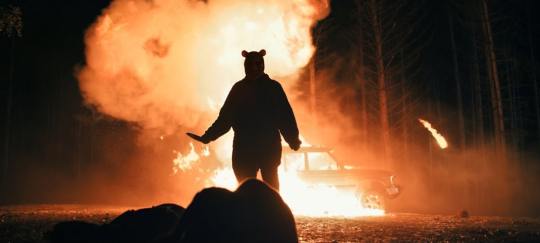
Indeed, these extensions to the period of copyright were largely driven by companies holding these intellectual property rights. The Copyright Term Extension Act was known in some circles as the “Mickey Mouse Protection Act,” reflecting Disney’s proactive lobbying in favor of the extension. Incidentally, Disney paid $350 million to buy Winnie the Pooh from the A. A. Milne estate in March 2001. It is ruthless capitalism, rooted in these companies’ desires to control the public imagination. The Copyright Term Extension Act ensured that no media entered the public domain between 1998 and 2019. As much as writers like Grant Morrison might argue that superheroes are the modern equivalent to the classic Greek gods, this ignores the fact that mythology is a public resource. The classic myths were not owned by large corporations that could use the threat of legal action to pull Vera Drew’s The People’s Joker from the Toronto International Film Festival after a single screening. This makes Blood and Honey a pointed act of transgression. The film comes from writer and director Rhys Frake-Waterfield, best known as a producer of low-rent schlock like Dinosaur Hotel and Dragon Fury. Realizing that A. A. Milne’s beloved childhood fable was entering the public domain, Frake-Waterfield sensed an opportunity. With a budget of under $100,000, he set out to make a quick cash-in slasher movie. Of course, Frake-Waterfield could only draw from elements included in the earliest stories. He had to avoid the iconic material added to the mythos in the years that followed. “Only the 1926 version is in the public domain, so those were the only elements I could incorporate,” Frake-Waterfield admitted. “Other parts like Poohsticks, and Tigger, and Pooh’s red shirt — those aren’t elements I can use at the moment because they’re the copyright of Disney and that would get me in a lot of trouble.” Blood and Honey is a bad movie. It is lazy, uninspired, and boring. It has no sense of character, theme, or basic structure. It’s a lazily reskinned version of Halloween or The Texas Chainsaw Massacre from a filmmaker who spent a significant portion of the press tour passive-aggressively complaining about how Halloween Ends took “itself too seriously.” There is nothing of any merit here, nothing to hold the audience’s interest. The film’s 84-minute runtime lasts several lifetimes. That said, there is a germ of an interesting idea in the central concept, which has an adult Christopher Robin (Nikolai Leon) returning to the childhood fantasy that he abandoned to go to college. He discovers that his childhood did not take well to this abandonment. Winnie the Pooh (Craig David Dowsett), now a feral and mute beast, chains Christopher up and tortures him. He whips the adult with Eeyore’s tail. However, Winnie the Pooh cannot kill Christopher. He must possess him.
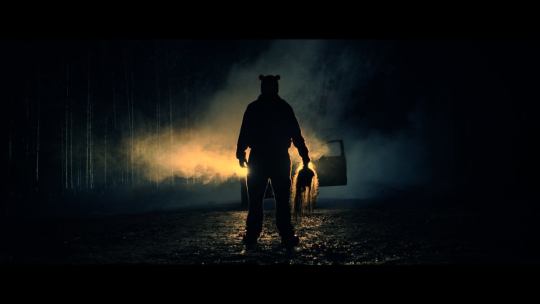
It is too much to suggest that this plot is mirrored in the story of the film’s actual protagonist and decoy final girl, Maria (Maria Taylor). Maria is taking a trip into the country with her girlfriends, recovering from a traumatic experience with a male stalker (Chris Cordell). When Maria’s friend Lara (Natasha Tosini) spots Pooh lurking around the Airbnb, she assumes that he must be Maria’s stalker. Pooh’s psychopathic sidekick, Piglet, is also played by Cordell, to underscore this connection. At times, Blood and Honey seems like it might be a clever and subversive commentary on the way in which so much modern pop culture infantilizes its audience. Christopher has tried to grow up and leave his childhood behind, even planning to marry his fiancée Mary (Paula Coiz), but his childhood won’t leave him behind. Pooh needs Christopher, his validation and his love. However, that relationship is not as innocent as it appears framed through childhood memory. Many modern adults would empathize with this idea, as their childhood nostalgia is weaponized against them by streaming services and studios. Even if one lives in a remote cabin in the woods, franchises like Star Wars, Teenage Mutant Ninja Turtles, He-Man, and X-Men: The Animated Series are inescapable. Entertainment that was once aimed at children is now aimed at the adults those children became. There is no indication that these corporations are ever going to stop. Of course, this gives Blood and Honey too much credit, suggesting that it can be read as a subversive commentary on the role that this sort of intellectual property plays in cultural stagnation. In reality, Blood and Honey is an illustration of just how pervasive this model of capitalism can be. Frake-Waterfield isn’t using Pooh to make a point about the cynical exploitation of these cultural touchstones. He is using it as a cynical exploitation of these cultural touchstones. Blood and Honey grossed nearly $5 million at the global box office, and one suspects that it performed very well on home media and streaming. There is already a sequel in the works with “five times the budget.” More than that, Frake-Waterfield has made a conscious effort to expand the brand into a shared universe built around similar properties. He will direct Peter Pan’s Neverland Nightmare and will produce Bambi: The Reckoning, which was sold to international distributors at Cannes this year. Frake-Waterfield doesn’t just have his eye on these sequels and spin-offs. He dreams of a bigger childhood horror shared universe. “The idea is that we’re going to try and imagine they’re all in the same world, so we can have crossovers,” he boasted. “People have been messaging saying they really want to see Bambi versus Pooh.” It’s incredibly ruthless and cynical. It is a transparent attempt to build a massive multimedia franchise from elements that the production team don’t have to pay for.
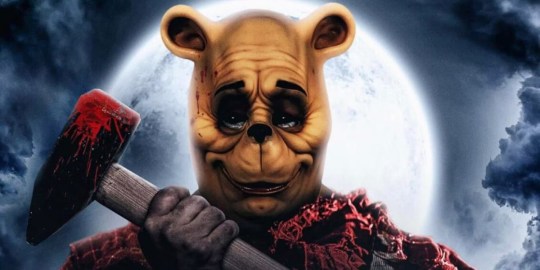
In theory, the liberation of these iconic characters from copyright should herald encourage creativity and ingenuity. It should allow for more projects like The People’s Joker or Apocalypse Pooh. There are certainly artists engaged in that sort of work. It also provides the opportunity for commentary and engagement with the modern media landscape. Last Week Tonight with John Oliver is already salivating at the satirical potential of Mickey Mouse’s entry into the public domain. Blood and Honey suggests an alternative to these creative uses of works leaving corporate purview. Blood and Honey is just as cynical and ruthless in its exploitation of this intellectual property as Disney had been. Frake-Waterfield is clearly aspiring to exploit these properties in exactly the same way that Disney did, hoping to create a scale model of their production machine. It is a trickle-down shared universe, a reheat of a familiar meal constructed from pre-digested ingredients. For all the moral handwringing about how the movie “ruined people’s childhoods,” this is the real horror of Blood and Honey. It suggests the limits of creative imagination, an inability to conceive of an alternative to the model of intellectual property management that defines so much contemporary pop culture. The roots of this mode of thinking run so deep that it seems impossible to imagine any alternative. The public domain doesn’t free this intellectual property from endless exploitation, it just means somebody else gets to take a turn. If the rights to Winnie the Pooh are entering the public domain, why wouldn’t somebody use the brand recognition to make a quick and easy buck? After all, the business logic behind Blood and Honey is the same logic behind something like The Little Mermaid or Ant-Man and the Wasp: Quantumania. People recognize the brand, and that will make it easier to sell. Even this seemingly subversive and rebellious act is just a cheaper, more cynical, and less competent iteration of the larger processes that drive modern media. All things considered, the cynicism of Blood and Honey is a small price to pay for the possibility of more work like The People’s Joker. More than that, if it helps to undermine or shatter the brand loyalty that these corporations have cultivated among generations of movie-goers, it may serve some purpose. Still, it’s disheartening to watch Blood and Honey, realizing that these modes of exploitation are so deeply ingrained in pop culture that they perpetuate even in the public domain. Even as the end of copyright becomes a reality, the end of this intellectual property churn remains beyond imagination. Oh bother.
105 notes
·
View notes
Note
Howdy. I was directed here by my beloved friend transsexualunderground, with whom I first delivered this particular slice of content farm delight.
I like clicking Tumblr's WordAds ads, because they're always just really bad wordpress blog posts. This one caught my eye because I have no idea who the Tumblr target audience is for "the best cartoons now". But I certainly could not miss it out.

This one brought me to a page with this same F YU'RE HAPPY AND KNNOW IT image, twice, along with a link leading to the Animator kid Land Youtube page. Animator kid Land has 19 videos, most of which are just the typical lullaby schlock with AI-generated thumbnails. Except for the latest one: Mermaid Zombie Pregnant Song.
Upon further investigation and despite my hopes that Animator kid Land was planting a fresh seed among the barren wastelands here, it was discovered that Mermaid Zombie Pregnant Song is not an original work.

Note that all of these are 10+ minutes long (and, somehow, different lengths), while Animator kid Land's Mermaid Zombie Pregnant Song was about two and a half minutes.
Just an interesting bit of zombie mermaid pregnancy that is somehow being advertised to me, a grown adult man who uses Tumblr mostly to read funny text posts about a 60 year old TV series. Enjoy!
hi sorry this is a late reply!
being advertised content farms on tumblr is WILD i wish those were the ads i got. i just get ads for weed and mobility aids for senior citizens
these videos have definitely got my attention, they're very elsagate-y. i was honestly surprised to see the dates on them, they look just like classic elsagate videos
16 notes
·
View notes